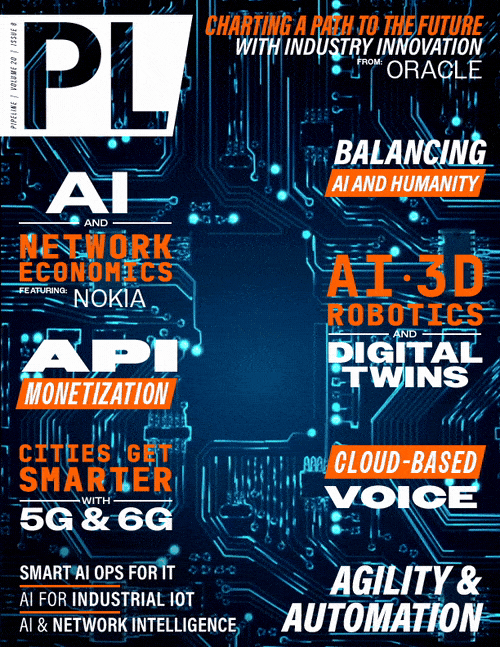A Foundation for the Future of Communications
 Communications service providers (CSPs) today are facing significant challenges in competing with digital disruptors and traditional competitors. Success in this market relies heavily on IT and
business agility, including the ability to quickly capitalize on emerging opportunities and identify new revenue streams. In this article we will identify four foundational elements to unlocking
new opportunities for service providers and charting a path beyond the consumer market: cloud native, open industry standards, analytics/AI, and automation.
Communications service providers (CSPs) today are facing significant challenges in competing with digital disruptors and traditional competitors. Success in this market relies heavily on IT and
business agility, including the ability to quickly capitalize on emerging opportunities and identify new revenue streams. In this article we will identify four foundational elements to unlocking
new opportunities for service providers and charting a path beyond the consumer market: cloud native, open industry standards, analytics/AI, and automation.
Building upon a Cloud Native Framework
As an enabler for Industry 4.0, CSPs must undergo significant transformation. To truly unlock the potential of 5G, a behavioral shift is required in how they expose network capabilities and participate in ecosystems. The journey begins with adopting a cloud native framework and leveraging cloud native applications for everything from the 5G core to policy engines, network automation and analytics, ordering, provisioning, billing, and operations automation. These capabilities are critical to efficiently operating and scaling 5G and beyond in the new era of disruption, and rapidly offering and monetizing digital services for the enterprise market.
A 5G cloud native core and cloud native network operations are essential for CSPs to achieve better measurement, visibility, and observability. This approach enables them to make informed business decisions, such as identifying new revenue streams based on behavior and insights. While some of this could be achieved with a 4G evolved packet core, it would be limited and costly.
As communications become increasingly critical for future innovation, many enterprises and developers seek full access to their data and control over their private networks. They want to consume such services with the ease and simplicity of consuming anything else on the cloud today — through a marketplace. This vision aims to differentiate operators from those whose primary offering is connectivity. Developing and implementing platform capabilities enables CSPs to co-innovate and co-create value with broader digital ecosystems, providing support for process automation and exposing insights to partners to enhance business decisions. This one-stop shop, marketplace vision includes network capabilities, cloud compute capabilities, and industry vertical applications from partners with deep enterprise expertise.
Composable networks leveraging cloud native technologies are crucial in realizing this vision. By breaking down network functions into modular, reusable components, CSPs can create a flexible, scalable infrastructure that adapts to changing demands and fosters innovation. This approach not only streamlines operations but also accelerates the development and deployment of new services, ensuring that CSPs remain competitive in a rapidly evolving market.
Observability at the network level is another pivotal component enabled by a cloud native framework. For example, leveraging analytics and machine learning, RAN Intelligent Controllers, and advanced policy control functions and network exposure functions, CSPs can find unique and innovative ways to unleash the power of data and look at mobility management like never before. This level of observability allows CSPs to proactively monitor network performance, identify potential issues before they impact customers, and optimize network resources to deliver superior service quality.
Embracing Open Industry Standards
The move to the cloud is significant, and the challenges are often underestimated when it comes to transitioning to open source technology. Open source adoption requires CSPs to rethink their existing business practices and embrace new models of operation. This includes moving to a DevOps approach that emphasizes continuous integration and continuous deployment (CI/CD), allowing for rapid updates and improvements to software and systems.
Incorporating open industry standards also means adopting a collaborative mindset, where CSPs work closely with industry partners, standards bodies, and the broader open source community. This collaboration fosters innovation and ensures that the solutions developed are robust, interoperable, and capable of meeting the diverse needs of the telecommunications sector.
Furthermore, standardization of open source tools and frameworks can lead to significant cost savings for CSPs. By leveraging widely adopted open source solutions, CSPs can reduce their reliance on proprietary technologies, which often come with high licensing fees and vendor lock-in. Instead, they can take advantage of a rich ecosystem of tools and resources that are continually being improved and updated by a global community of developers.
Leveraging best practices, tooling, and processes from hyperscale cloud partners that have become de facto standards is crucial. Standard ways to deploy on Kubernetes, CI/CD tooling, and adherence to 3GPP standards are essential building blocks. While standardizing system interactions is important, maintaining an ecosystem that keeps pace behind the scenes is vital for interoperability. This involves: 1) de facto standards: practical methods that people actually use; 2) real standards: established by bodies like 3GPP; 3) frameworks: like TM Forum’s Open API and ODA, which facilitate interaction between systems.


















